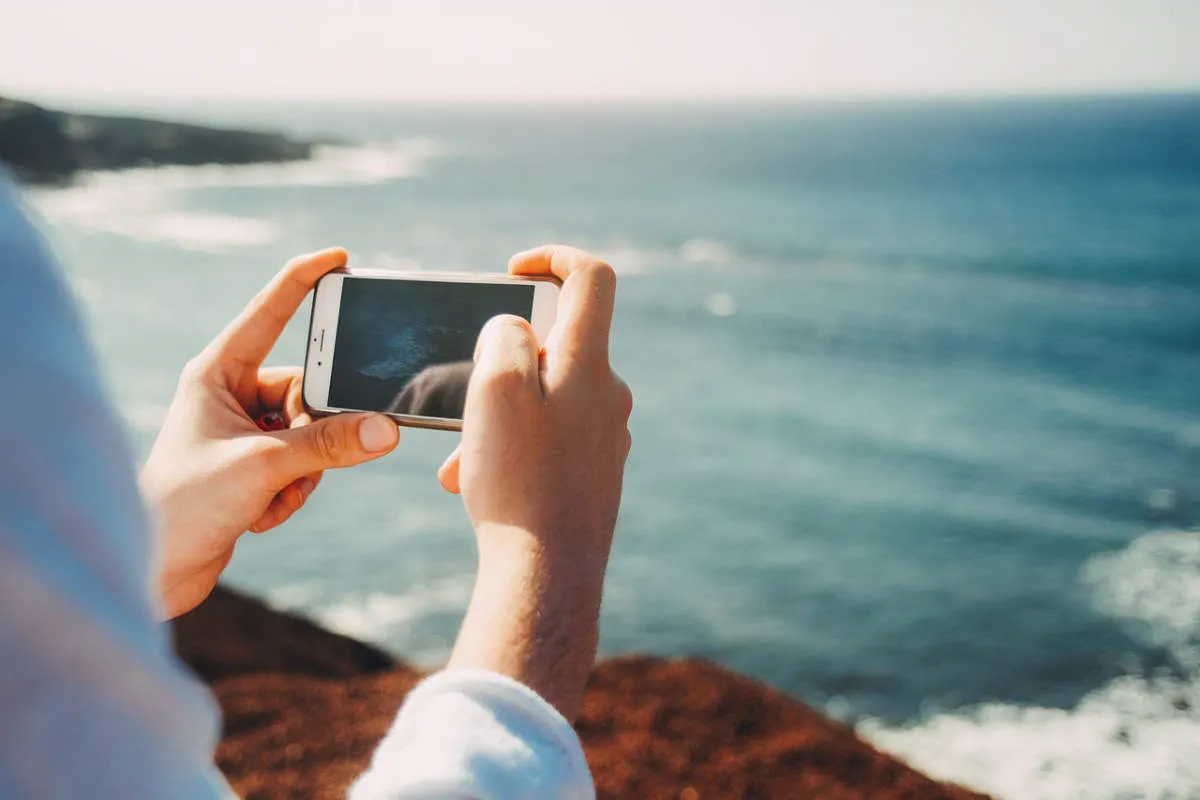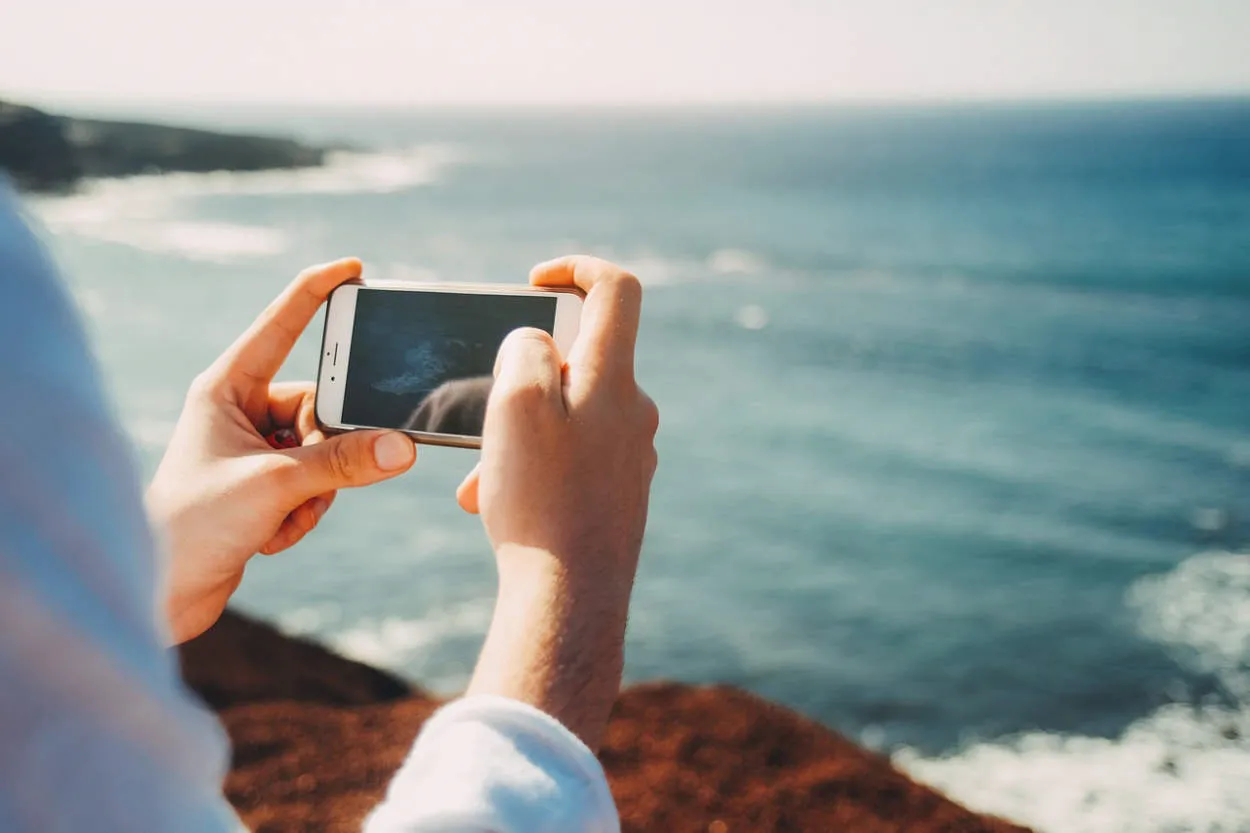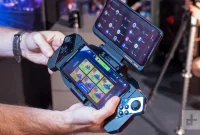In the age of technology, smartphones have become powerful tools for creatives to capture stunning photographs. In this article, we will explore the art of smartphone photography and guide you through selecting the best tools to enhance your creative journey. Discover how to unlock the full potential of your smartphone camera and elevate your photography skills to mastery.
Smartphones for Aspiring Photographers

When it comes to smartphone photography, having the right tools is essential for capturing stunning images. Aspiring photographers need smartphones with exceptional camera capabilities and features that help enhance their creativity. Here are some top smartphone options for those looking to master the art of smartphone photography:
1. iPhone 12 Pro
The iPhone 12 Pro offers a powerful triple-camera system with enhanced low-light performance and advanced computational photography features. Its ProRAW capability allows for more control over post-processing, making it a favorite among professional photographers.
2. Google Pixel 5
Renowned for its computational photography prowess, the Google Pixel 5 excels in capturing detailed images and stunning portraits. Its Night Sight mode delivers exceptional low-light photography, while features like Astrophotography mode allow for capturing breathtaking shots of the night sky.
3. Samsung Galaxy S21 Ultra
The Samsung Galaxy S21 Ultra boasts a remarkable quad-camera setup, including a 108MP main sensor, 100x Space Zoom, and 8K video recording capabilities. With advanced manual controls and a large sensor, this smartphone is perfect for those who want maximum versatility in their photography.
4. Huawei P40 Pro
The Huawei P40 Pro showcases the brand’s expertise in smartphone photography. It features a Leica quad-camera system, offering superb image quality and versatile shooting options. Its AI-powered processing enables sharp, vibrant, and detailed photos even in challenging lighting conditions.
Whether you are a beginner or an aspiring professional, investing in a smartphone with excellent camera capabilities can greatly improve your photography skills. Each of these smartphones provides a range of features and functionalities to help you unleash your creative potential and capture stunning images.
Advanced Camera Settings Explained
In order to master smartphone photography and select the best tools for creatives, understanding advanced camera settings is crucial. These settings allow photographers to have more control and capture images with precision.
1. ISO
The ISO setting determines the sensitivity of the camera sensor to light. Higher ISO values are useful in low light situations, but they can introduce noise into the image. Lower ISO values produce cleaner images but may require more light.
2. Shutter Speed
Shutter speed refers to the length of time the camera’s shutter remains open. Faster shutter speeds freeze motion, while slower speeds create motion blur. Adjusting the shutter speed allows photographers to experiment with different creative effects.
3. Aperture
Aperture controls the amount of light entering the camera through the lens. It also affects the depth of field, determining how much of the image is in focus. A wider aperture (smaller f-number) results in a shallow depth of field, while a smaller aperture (larger f-number) increases the depth of field.
4. White Balance
White balance ensures accurate color representation in different lighting conditions. Auto white balance is generally reliable, but manual adjustments can be made for more precise control. Experimenting with different white balance settings can create unique moods and tones in your photos.
By understanding these advanced camera settings and how they affect your images, you can elevate your smartphone photography and unleash your creativity. Each setting plays a vital role in capturing the perfect shot, so don’t be afraid to experiment and push the boundaries of what your smartphone camera can do.
Mobile Editing Apps and Tools
In the age of smartphone photography, having the right tools can greatly enhance your creative process and help you capture stunning images. With a plethora of mobile editing apps and tools available, it can be overwhelming to choose the best ones for your needs. This article aims to provide guidance in selecting the ideal tools for creative smartphone photography.
1. Adobe Lightroom Mobile
Adobe Lightroom Mobile is a powerful editing app that brings the renowned features of its desktop version to your smartphone. With an intuitive interface, it allows you to make precise adjustments to colors, exposure, and other elements of your photos. Its syncing capability also enables seamless editing across multiple devices.
2. VSCO
VSCO offers a wide range of beautiful presets that allow you to quickly enhance your photos with one tap. It also provides advanced editing tools for meticulously adjusting various aspects of your images. With a strong community aspect, you can explore others’ creative works and find inspiration for your own.
3. Snapseed
Snapseed, developed by Google, is a versatile editing app that offers a comprehensive set of editing tools. From basic adjustments to advanced features like selective editing and healing brush, it provides the flexibility to fine-tune your photos. The user-friendly interface makes it suitable for both beginners and experienced photographers.
4. ProCamera
ProCamera goes beyond basic editing tools and offers a variety of shooting modes, including manual controls for ISO, shutter speed, and white balance. It also features a low-light mode and a portrait mode for capturing professional-looking photos. With its advanced options, it is a great choice for photographers who want more control over their shots.
5. Filmmaker Pro
For those interested in videography, Filmmaker Pro is a powerful app that allows you to shoot and edit high-quality videos directly on your smartphone. With features like manual controls, adjustable frame rates, and multiple video tracks, it provides a professional-level editing experience for content creators.
Remember, the best tools are the ones that suit your specific needs and preferences. Experiment with different apps and tools mentioned in this article, and find the ones that align with your creative vision. With the right mobile editing apps and tools at your disposal, you can unlock the full potential of your smartphone photography and take your creativity to new heights.
Creative Techniques in Smartphone Photography
Smartphone photography has evolved significantly in recent years, allowing creatives to capture stunning images without the need for expensive camera gear. To master this art form, it’s essential to have the right tools at your disposal. Here are some creative techniques to enhance your smartphone photography:
1. Manual Mode
Explore the manual mode on your smartphone camera to have full control over settings such as ISO, shutter speed, and white balance. This allows you to experiment and achieve desired effects like long exposures or capturing motion.
2. HDR Mode
High Dynamic Range (HDR) mode helps balance exposure by capturing multiple shots with different exposures and merging them together. This technique is particularly useful for capturing landscapes or scenes with contrasting light and shadow.
3. Composition Techniques
Apply fundamental composition techniques such as the rule of thirds, leading lines, symmetry, and framing to create visually appealing photographs. Experiment with different angles and perspectives to add depth and interest to your images.
4. Macro Photography
Explore the world of small details with macro photography. Get up close to your subject and capture intricate textures, patterns, and unique perspectives that might go unnoticed by the naked eye.
5. Editing Apps and Filters
Take advantage of editing apps and filters available for smartphones to enhance your photographs. Experiment with adjustments like exposure, contrast, saturation, and apply creative filters to add a unique touch to your images.
6. Long Exposure
With the help of additional smartphone accessories like a tripod, experiment with long exposure photography. This technique allows you to capture smooth waterfalls, light trails, or create surreal effects by capturing movement over an extended period.
By mastering these creative techniques, smartphone photographers can elevate their skills and produce captivating images. Remember, the key is to experiment, practice, and let your creativity flourish!
Accessorizing for Enhanced Mobile Photography
When it comes to smartphone photography, having the right tools can make a significant difference in the quality of your shots. While smartphone cameras have improved greatly over the years, accessorizing can take your mobile photography to the next level. Here are some accessories you should consider:
-
External Lenses:
Attachable lenses can expand the capabilities of your smartphone camera, allowing you to capture wide-angle shots, macro close-ups, fisheye effects, and more. They are easy to use and provide a simple way to experiment with different types of photography.
-
Tripods and Stabilizers:
To capture steady and blur-free photos, especially in low light conditions or for longer exposures, using a tripod or stabilizer is essential. They help reduce camera shake and allow you to take sharper images.
-
Remote Shutter Release:
A remote shutter release enables you to take photos without touching your smartphone, reducing the risk of camera shake and allowing you to be more creative with your compositions. It also comes in handy for group shots and self-portraits.
-
External Lighting:
Good lighting is crucial for photography, and sometimes the built-in flash on smartphones may not be sufficient. Consider using external lighting options like a portable LED light or a ring light to enhance the lighting conditions and add a professional touch to your photos.
-
Camera Apps:
While the native camera app on your smartphone is usually capable, there are many third-party camera apps available that offer advanced features and manual controls. These apps allow you to have more control over your photography settings and produce higher quality images.
By incorporating these accessories into your mobile photography toolkit, you can elevate your skills and unleash your creative potential. Experiment with different tools and techniques to discover your unique style and capture stunning images with your smartphone.
Trends in Mobile Visual Storytelling
Mobile visual storytelling has become increasingly popular in recent years, thanks to the advancements in smartphone technology and the rise of social media platforms. As more and more people turn to their mobile devices for capturing and sharing moments, there are several key trends to look out for in this evolving field.
1. Cinematic Techniques on the Go
With the increasing capabilities of smartphone cameras, users are now able to create visually stunning content using cinematic techniques. Features such as manual controls, portrait mode, and HDR (High Dynamic Range) enable photographers and videographers to experiment and shoot professional-level footage with their smartphones.
2. Vertical Video Dominance
Vertical video has taken over social media platforms, thanks to the rise of apps like TikTok and Instagram Stories. As users scroll through their feeds on mobile devices, vertical videos allow for a more immersive viewing experience. This has led to a shift in content creation, with more emphasis on creating vertical format videos that are optimized for mobile consumption.
3. Augmented Reality Enhancements
Augmented reality (AR) features have become increasingly popular in mobile visual storytelling. AR filters and effects allow users to transform their photos and videos with virtual elements, adding a layer of creativity and fun to their content. From face filters to animated stickers, AR technology has become a powerful tool for enhancing storytelling using smartphones.
4. Mobile Editing Apps
There is a wide range of mobile editing apps available, offering users the ability to fine-tune their photos and videos directly on their smartphones. These apps provide features like filters, cropping, and adjustments to enhance the visual appeal of content. With the convenience of editing on the go, users can now create and share polished and professional-looking visuals without the need for extensive post-processing.
5. Influencer-Led Visual Storytelling
Influencers and content creators play a significant role in shaping trends in mobile visual storytelling. Their ability to engage and captivate audiences through their creative content has pushed the boundaries of what is possible using smartphones. Many influencers now specialize in smartphone photography and videography, inspiring others to explore and experiment with visual storytelling in the mobile space.
Conclusion
In conclusion, mobile visual storytelling continues to evolve and adapt to the changing landscape of smartphone technology and social media platforms. As users become more adept at capturing and sharing moments using their mobile devices, it is crucial to stay updated with the latest trends and tools to stay ahead in this exciting field.
Conclusion
With the rapid development of smartphone technology, photographers and creatives now have access to a wide range of tools that can elevate their photography skills. From high-quality camera sensors to advanced editing apps, smartphones have become a powerful tool for capturing and enhancing stunning images. The key to mastering smartphone photography lies in selecting the best tools that match your creative vision and experimenting with different techniques. By combining your artistic eye with the convenience of smartphone technology, you can unlock a world of endless creative possibilities.



